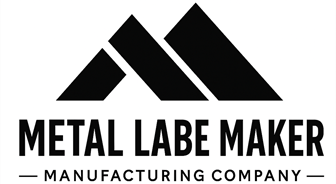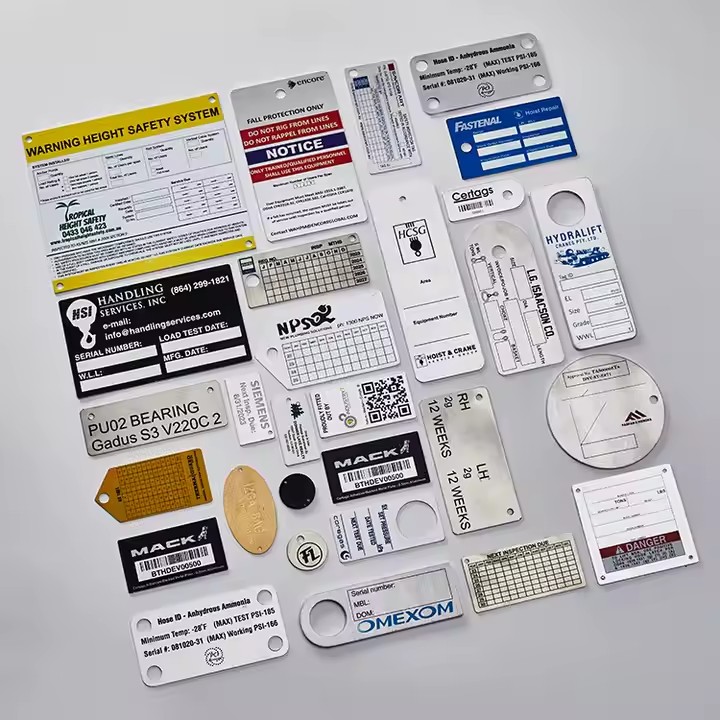When customizing metal labels, the printing or marking method plays a critical role in both durability and visual appearance. Whether you need vibrant branding or long-lasting industrial data plates, selecting the right technique is key.
Below, we break down the most commonly used metal label printing and marking methods, their benefits, limitations, and best-use cases.
🎨 1. Screen Printing (Silkscreen)
Overview: A traditional method that pushes ink through a stencil screen onto the metal surface.
Best For:
-
Simple graphics or logos in 1–3 colors
-
High-volume, cost-effective production
-
Aluminum, stainless steel, or brass surfaces
Pros:
-
Crisp, bold colors
-
Good for flat and uniform surfaces
-
UV-resistant inks available
Limitations:
-
Not ideal for small or complex designs
-
Can fade over time in harsh outdoor environments without protective coating
🌈 2. UV Digital Printing
Overview: Uses ultraviolet light to instantly cure ink on the metal surface. Enables full-color and photo-quality output.
Best For:
-
Logos, photos, barcodes, or gradient effects
-
Brand nameplates or decorative labels
-
Smooth aluminum and coated metal surfaces
Pros:
-
Full-color capability (CMYK)
-
Instant drying = faster production
-
Highly customizable per piece
Limitations:
-
Less abrasion resistance than engraving
-
Requires flat and smooth surfaces for best results
🔍 3. Laser Engraving
Overview: A high-precision laser burns or vaporizes the top layer of metal, creating permanent markings.
Best For:
-
Serial numbers, QR codes, barcodes
-
Industrial nameplates or rating plates
-
Stainless steel and anodized aluminum
Pros:
-
Permanent and tamper-proof
-
No ink = won’t fade, peel, or rub off
-
High-speed and automated for variable data
Limitations:
-
Limited color (engraving is tonal or monochrome)
-
Not ideal for colorful branding
🧪 4. Chemical Etching (with Optional Color Fill)
Overview: Uses acid or laser to etch designs into the metal surface; paint fill is optional for added visibility.
Best For:
-
Fine lines, logos, or technical graphics
-
Stainless steel, brass, and aluminum
-
High-end industrial or architectural labels
Pros:
-
Precise, deep, and clean etching
-
Optional enamel or epoxy fill for color
-
Excellent durability, especially with coating
Limitations:
-
Higher cost than print-only methods
-
Longer lead time due to multi-step process
✨ 5. Embossing & Debossing
Overview: Uses pressure and dies to create a raised (embossed) or recessed (debossed) pattern.
Best For:
-
Logo badges, high-end branding
-
Tactile labels and luxury packaging
Pros:
-
3D effect enhances visual and tactile feel
-
No ink involved = long-lasting
-
Works great with electroplated finishes
Limitations:
-
Requires custom molds
-
Not suitable for detailed designs or small fonts
⚙️ 6. Die-Casting with Molded Design
Overview: Molten metal is poured into a custom mold, forming a detailed shape or logo.
Best For:
-
Dimensional logo labels, badges
-
Zinc alloy products
-
Automotive, wine, or electronics branding
Pros:
-
Excellent depth and definition
-
High perceived value
-
Durable, impact-resistant finish
Limitations:
-
Higher setup cost for molds
-
Best for medium to large batches
🏁 Which Printing Method Should You Choose?
| Application | Recommended Method |
|---|---|
| Colorful logo plate | UV or screen printing |
| Industrial barcode plate | Laser engraving or etching |
| Outdoor plant tag | Anodized aluminum with laser engraving |
| Luxury branding | Die-casting or embossing |
| Serial number with logo | Etched with fill or engraved |
💬 Need Help Choosing?
Our engineers will guide you through the best method based on your design, budget, and application.
📧 Contact: senka@greatmosen.com
👉 Learn more: How to Customize Your Label





